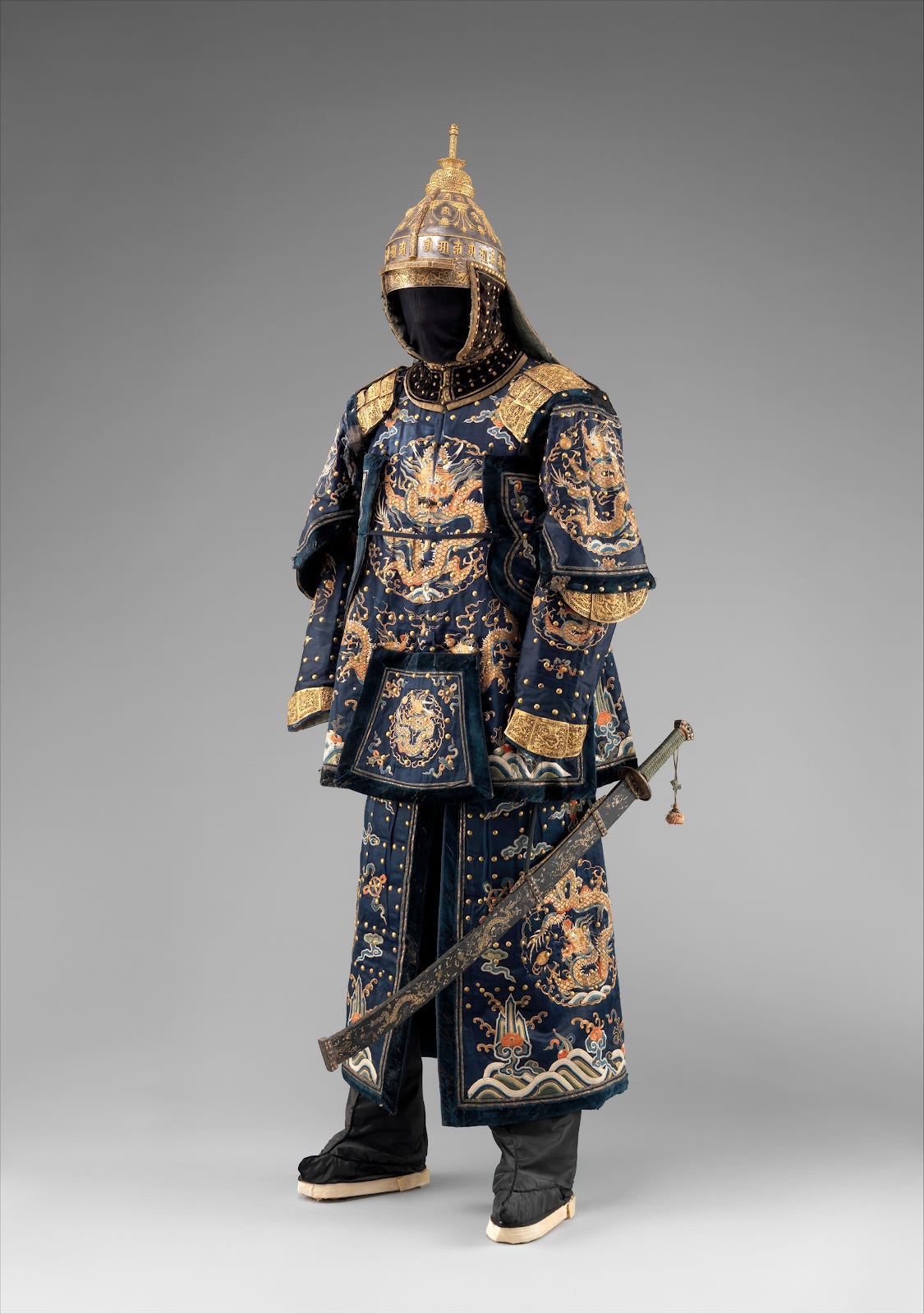'Fashion as Armor'
On Black History Month, the power of dress as protection, Chinese dress history and exploring non-Western royal fashion.
Hello everyone,
As we enter what is celebrated as Black History Month (February) in various countries, many Black people know that this is a designated time for celebration and remembering (at best) and a time for non-invested, superficial remarks by brands (at worst). Here at the database, every month is Black History Month, but we have been called upon by brands (I know I certainly have, personally) to amplify Black History Month amidst these delicate times we are living in. It wouldn’t be helpful to deny the opportunity to work with companies that seek to do better–it’s always been my goal to position The Fashion and Race Database as an intellectual engine that can drive us into a more enlightened and culturally compassionate world.
All of this is to say, when the Canadian luxury retailer Holt Renfrew reached out to us once again (remember, they sponsored our ‘Retail as a Portal’ talk series back in October?), asking us to curate content for their social media for BHM, we were happy to do it. What we didn’t expect was that they would build a landing page showcasing our work on their retail website! It was pretty affirming to see, and I invite you to check it out.
I don’t want to give away too much, because next week I’ll share with you the content that we delivered, as we roll out some powerful writing that my dear friend and colleague Dr. Jonathan M. Square pulled together for this project. Special thanks to our Project Manager Rachel Kinnard for producing this BHM series with me for Holt Renfrew.
Essay: ‘Fashion as Armor’

The manifold capacities of clothing and fashion are perhaps self-evident, but I want to put pressure on thinking about fashion design as an artistic endeavor that takes into account historical and material conditions: for many of us—especially brown, Black, Indigenous, trans, queer, and subaltern peoples—fashion is armor, aiding our navigation of various environments and protecting us from hostile people and spaces.
Balbir K. Singh is scholar of cultural theory, critical race and gender studies, and anti-colonial thought. Currently, she is at work on her first book, Militant Bodies: Racial/Religious Opacity and Minoritarian Self-Defense, which looks at the visual culture and body politics of Muslims, Sikhs, and other minoritarian subjects under the rise of global Islamophobia and contemporary surveillance culture.
We invite you to read guest contributor Balbir Singh’s essay, 'Fashion as Armor,' as she introduces you to three contemporary artists who are challenging and complicating the ways in which clothing can be a form of ‘armor’– “as both soft and hard, as deeply gendered, and as protection.”
From The Library: Fashion in China through the centuries

This week, FRD Researcher Laura Beltrán-Rubio has assembled a reading list for you on what we have in our library when it comes to the history of dress in China:
China has developed a unique fashion system since at least a millennium. In Tang dynasty China (618–907), for example, changes in dress and shifts in the perceptions of dress reveal the emergence of a fashion system. Later, in the Republic of China (1912–49), textiles became an important marker of Chinese modernity and played a prominent role in fashioning new Chinese appearances. Nowadays, multiple fashion practices constitute Chinese fashion both in China and its diasporas. These range from “western” styles of dress to the reemergence of traditional styles like the Hanfu among an increasing number of young Chinese.
Material Girls: Silk and Self-Fashioning in Tang China (618–907) by BuYun Chen (Paywall Article)
When Modernity and Nationalism Intersect: Textiles for Dress in Republican China by Mei Mei Rado (Open-Access Article)
China Fashion: Conversations with Designers by Christine Tsui (Book)
Fashion in Multiple Chinas: Chinese Styles in the Transglobal Landscape by Wessie Ling & Simona Segre-Reinach (Book)
‘Hanfu, the Chinese traditional costume chased by the young’ by CGTN (Films & Documentaries)
‘The Library’ is where we collect and organize countless educational sources all in one place. Referenced by educators, students, fashion enthusiasts and curious minds, this multi-faceted repository provides an expanding selection of tools for learning about all matters connected to fashion, appearance, power and the impact of ‘race.’
The Calendar: ‘Dialogues on the Art of Fashion: Fit for a Queen’ – February 2, 2021
Our colleagues at The Zay Initiative have shared this upcoming event, in case you are interested in learning about non-Western, royal fashion history:
Queen Sirikit, Queen Mother of Thailand, is considered to be one of the most beautiful, stylish, and best-dressed women in the world. In this conversation with Dr Reem el Mutwalli, fashion historian, Melissa Leventon, author of Fit for a Queen, will discuss her book paying tribute to the wardrobe created by French designer Pierre Balmain for the Queen’s royal visit to USA and Europe in 1960. She will discuss the collection, now housed at the Queen Sirikit Museum of Textiles in Bangkok, the design process, details about the individual designs, and the public’s reaction to the wardrobe.
Visit our event page for details and to register.
A global network of events, conversations and opportunities will continue to evolve the discourse on fashion and race. ‘The Calendar’ remains on the pulse and keeps you looped in.
That’s it for now. Please stay safe and we’ll see you next week.
Yours in service and solidarity,
Kim Jenkins
The Fashion and Race Database Team: Rachel Kinnard, Daniela Hernandez, Kai Marcel, Laura Beltrán-Rubio




